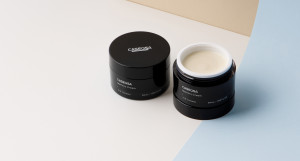
Despite the spread of COVID-19 around the world, all economic activities and exports and imports of each country are weakening. As for cosmetics, exports and imports were very active in each country. Especially, overseas shipments of Korean cosmetics hit a record high.
According to the Korea Trade Statistics Promotion Institute, Korean cosmetics exports reached $616.49 million in March, up 30 percent from a year earlier.
Korean cosmetics exports to China are $312.76 million (49% year-on-year, 63% month-on-month increase) and Korean cosmetics exports to Hong Kong are $94.56 million (15% year-on-year, 112% month-on-month increase) and Korean cosmetics exports to Japan are $48.92 million (62% year-on-year, 47% month-on-month increase). (Exports to countries other than China and Hong Kong amounted to $210 million in March, up 15% from a year earlier and up 13% from a month earlier.)
In China, COVID-19 peaked in February, and it is analyzed that cosmetics consumption was high, mainly in online malls, in March. (Chinese e-commerce company Pinduoduo also reported an average of 50 million online orders a day from mid-March to early April, up 60 percent from the same period last year, especially sales of color cosmetics such as lipstick and eye shadow increased significantly.)
As a result, Korean cosmetics companies are putting more weight on strengthening their overseas online business, and their partnership with e-commerce companies is also becoming more active.
However, despite the growing purchases of cosmetics in each country and the fact that cosmetics companies are focusing on online sales, the Japanese cosmetics market has a very different atmosphere.
The online purchase rate of cosmetics in Japan is about 6%, and online is still an immature market. Although online purchases have increased somewhat due to the recent COVID-19 incident, the majority of consumers in Japan end
Meanwhile, with Korean cosmetics exports to Japan rising 62 percent year-on-year, Japanese cosmetics distributor, Medicaraise is drawing attention as it is attempting a new challenge.up buying cosmetics offline. Only teenagers and women in their 20s who are good at online purchase some of them on YouTube and Instagram. (In July 2019, due to joint
research with Japanese cosmetics e-commerce platform company NOIN and Tanaka Research Laboratory, Graduate School of Information at Tokyo University. NOIN’s more than two years of purchase data, approximately 300,000 surveys, were released.)

The Japanese cosmetics market, riding on the Korean Wave boom such as K-Pop and K-Drama, has been formed mostly by famous Korean conglomerates with brand power, and seems to be almost standardized in terms of product originality, excellence and cost-effectiveness in all categories of cosmetics.
In response, Medicaraise is trying to distribute Korean small and medium-sized brands to Japan, where Korean women in their 20s and 30s, who are sensitive to the world’s most cosmetics trends, posted explosive repurchase rates and reviews on Instagram. In addition, Medicaraise is preparing products that combine product originality, excellence, and cost-effectiveness in all categories of cosmetics.
Medicaraise is working to prepare high-cost cosmetics items not only for offline channels with high purchase rates, but also for those in Japan’s 10s and 20s who are familiar with online and distribute them to Rakuten, Yahoo and various online channels. It is also a new challenge for Medicaraise (Founded in 1983, it began distributing Korean cosmetics in 2008.), which has been distributing brand products of many famous Korean cosmetics companies for 13 years.
Unlike other countries, it is worth noting what changes Medicaraise will bring about in the Japanese cosmetics distribution market, where online cosmetics distribution is very weak and many famous Korean cosmetics brands are competing.
Mike Choi
Asia Journal
(Los Angeles Times Advertising Supplement)

